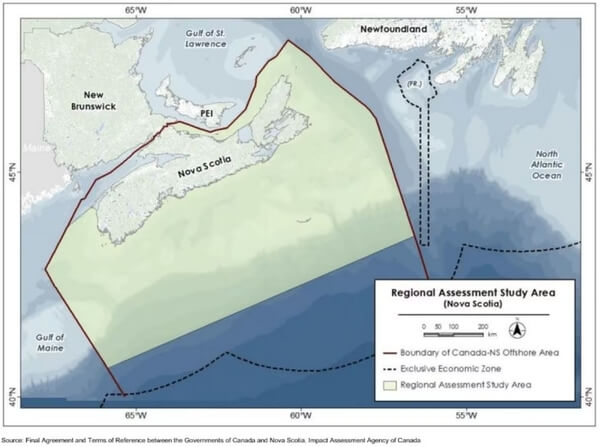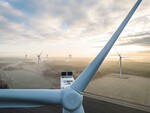News Release from windfair.net
Wind Industry Profile of
Canada approaching offshore wind energy
The province of Nova Scotia has excellent conditions for the construction of offshore wind farms. It is located in the very east of Canada and consists mostly of the peninsula of the same name, surrounded by a lot of water. Its capital is Halifax - and the province's premier, Tim Houston, believes it's time Canada caught up with other countries in offshore wind development. And, of course, he wants Nova Scotia to lead the way.
"Think of the coastlines that we have in this country and we have zero offshore wind production right now," Houston told the press back last year in September. "I'm focused on changing that issue and I'm focused on Nova Scotia being a leader in changing that."
No sooner said than done. And now there seems to be movement. By 2030, Houston's plan is to offer leases for 5 GW of offshore wind off Nova Scotia's coasts - in part to support the burgeoning green hydrogen sector.
It's a mammoth project, given that the power generation capacity of the province's entire electricity grid is currently only about 2.5 GW. "It's ambitious, for sure, but it's completely possible," said Houston. "We want to make that happen."
Then, in late May, the Canadian federal government laid another cornerstone for future offshore wind development, granting offshore wind regulatory authority to the provinces of Nova Scotia, Newfoundland and Labrador. Previously, the agencies had only regulated offshore oil and gas projects.
"This is an exciting day for Canada and our marine renewable energy sector. The tabling of the amendments is an important milestone towards establishing an offshore wind industry that will play a significant role in our clean energy future," said Elisa Obermann, Executive Director at Marine Renewables Canada. "Offshore wind development also poses a major opportunity for businesses and communities. After decades of supporting offshore oil and gas and other ocean industries, Canadian suppliers have strong capabilities that can be transferred and adapted to support offshore wind projects and growth of the sector."

A map in the offshore wind document that shows the regional assessment study area in Nova Scotia. (Source: Nova Scotia Offshore Wind Roadmap via CBC)
Canada is also very interested in developing green hydrogen production. The country is already in a privileged position, being one of the few developed countries that is a net exporter of energy. And with the global energy crisis, more and more countries are looking at ways to meet their energy needs through imports. So Canada would have the opportunity to make even more money by producing green hydrogen for export.
And that makes for even more ambitious goals. Nova Scotia's government e.g. already backed away from the plan to offer auctions for leases of offshore wind areas starting in 2025. Instead, they want to start as early as next year, as CBC reports.
A draft offshore wind plan for Nova Scotia, made available to some stakeholders late last month, says the province will issue a "request for information" to offshore wind project developers this year, followed by a request for proposals next year for seabed leases in waters under the province's exclusive jurisdiction. "In waters under provincial jurisdiction, early commercial-scale offshore wind could be developed closer to shore at relatively competitive costs, establishing a foundation for future larger-scale developments in joint-managed waters," the road map obtained by CBC News stated.
However, not everyone is positive about the go-ahead for offshore wind. Fisheries representatives from Guysborough and Richmond counties met with local MPs last week to talk about their concerns. The area is home to the lucrative inshore fisheries for lobster, scallops and crab.
"We need to have some regulation and some policy around that to protect the marine environment and also the existing industries that are 100 per cent dependent on the marine environment. That's the conversation we'd like to have, and we haven't had that yet. We're just starting," Ginny Boudreau, a longtime manager with the Guysborough County Inshore Fishermen's Association, told CBC News.
So before the first offshore wind turbines start spinning in Canada, there are likely to be at least a few more conversations.
- Author:
- Katrin Radtke
- Email:
- press@windfair.net
- Keywords:
- Canada, offshore, industry, oil, gas, federal, province, Nova Scotia, renewable energy, hydrogen, export, energy

























